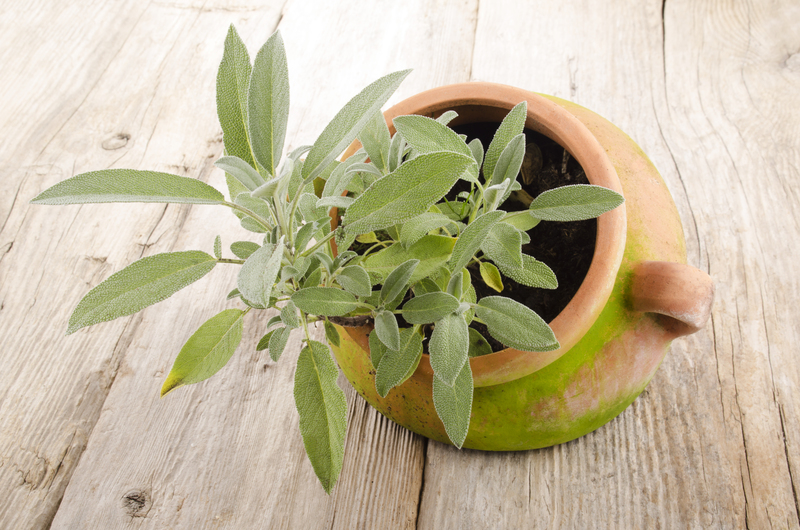Steps to Design an Inspiring Garden for Young Minds
Posted on 20/09/2025
Steps to Design an Inspiring Garden for Young Minds
Are you searching for ways to create an inspiring garden for young minds? Designing a garden that sparks creativity, nurtures curiosity, and fosters a lifelong love of the outdoors is a rewarding project for parents, teachers, and community leaders. A thoughtfully planned children's garden combines beauty, education, and hands-on experiences to ignite imaginations and support healthy development.
In this comprehensive guide, you'll discover the essential steps to design an inspiring garden for young learners, practical ideas, and expert tips for cultivating a flourishing space that welcomes exploration, discovery, and wonder.

Why an Inspiring Garden Matters for Young Minds
The benefits of a child-focused garden extend far beyond simple aesthetics. A well-designed outdoor space encourages physical activity, supports sensory development, enhances mental well-being, and builds a foundation for environmental stewardship. When children interact with nature, they develop critical life skills like problem-solving, observation, and teamwork. Research consistently shows that green spaces improve concentration, decrease anxiety, and boost creativity.
It's clear - creating an engaging kids' garden is an investment in a child's mind and spirit.
Step 1: Gather Inspiration and Define Your Vision
Ask: What Will Your Garden Achieve?
- Do you want your garden to be a quiet oasis or a hub for active play?
- Is the goal to grow food, attract pollinators, create art, or all of the above?
- Will the garden be used mostly for family fun, classroom activities, or community programs?
Begin by envisioning your ideal children's discovery garden. Collect ideas from children themselves! Ask open-ended questions: What would make you excited to visit this garden? What can you imagine seeing, touching, or smelling here? Their responses can shape your initial concepts and help prioritize features that foster engagement and learning.
Tips for Finding Inspiration
- Browse children's garden books and magazines.
- Visit local parks, botanical gardens, or schoolyards.
- Explore online platforms like Pinterest and Instagram for creative layouts and themes.
*Remember that the most memorable gardens often reflect local culture, climate, and community values.*
Step 2: Choose the Perfect Location
Selecting the right spot is foundational when designing a garden for young minds. The chosen area should be safe, accessible, and visible. Consider these factors:
- Sunlight: Most plants and play areas thrive in locations with 6+ hours of sunlight.
- Safety: Avoid high-traffic zones, steep slopes, and proximity to hazards like streets or water bodies.
- Accessibility: Ensure easy access for children of all abilities, parents, and educators.
- Size: Even small spaces can become magical; the key is maximizing what you have.
Mark outlined boundaries using chalk, string, or temporary fencing. This helps visualize the potential layout and prevents encroaching on other functional areas.
Step 3: Design the Layout with Children in Mind
A child-centered garden is more than just a collection of plants--it's a multi-sensory landscape where young learners can touch, smell, taste, hear, and observe. Design with scale, intrigue, and movement at the forefront.
Include Zones for Exploration and Learning
- Sensory Paths: Use textured stones, bark, or sand where children can walk barefoot and experience different sensations.
- Raised Beds or Planters: Position at child height, making it easy for little hands to help plant, water, and harvest.
- Observation Stations: Add benches, logs, or stumps where children can sit quietly and watch birds, insects, or plants.
- Wildlife Corners: Include native shrubs, pollinator plants, and shallow water dishes to attract butterflies, bees, and birds.
- Creative Play Zones: Carve out space for natural playscapes--think logs for balancing, boulders for climbing, and willow tunnels for hide-and-seek.
Organize pathways in gentle curves rather than rigid lines, encouraging adventure and discovery around each bend. Use bright, inviting colors and signage at child's eye-level to create a sense of ownership.
Step 4: Select Child-Friendly, Low-Maintenance Plants
Choosing the right plants is key to designing a kid-friendly learning garden. Select species that are:
- Non-toxic (always check plant lists for safety with children and pets).
- Durable, with varying shapes, colors, and scents.
- Fast-growing, providing near-instant impact and gratification.
Top Plant Choices for Young Learners
- Edibles: Cherry tomatoes, strawberries, peas, herbs (basil, mint, chives), carrots, sunflowers
- Sensory plants: Lamb's ear (soft leaves), lavender (fragrant), chocolate cosmos (smell), lemon balm (touch/smell), ornamental grasses (sound in wind)
- Native flowers: Coneflower, milkweed, black-eyed Susan (to support pollinators and resilience)
Let children participate in the planting process whenever possible; getting dirty is part of the fun and learning!
Step 5: Foster Engagement and Ownership
A truly inspiring garden for young minds comes alive when children feel a sense of ownership and agency. Involve them in ongoing care:
- Assign simple tasks like watering, weeding, or harvesting produce.
- Start a garden journal for observations, sketches, and seasonal changes.
- Host planting days, treasure hunts, or garden parties to celebrate progress.
- Label plants together using handmade signs or painted rocks.
A garden is a living classroom. Integrate nature art, science projects, storytelling, and even math games into daily visits.
Step 6: Add Creative Educational Features
A gardener's imagination knows no limits! Boost the magic of your space with these creative ideas:
- Mini-libraries or book nooks in shaded corners with weatherproof bins of garden-themed stories.
- Musical instruments crafted from recycled pots, metal tubes, or bamboo for sound exploration.
- Art areas for painting rocks, weaving natural materials, or making leaf rubbings.
- Water features (e.g., birdbaths, safe fountains) for splashing and wildlife observation.
- Measurement stations with rulers, graphs, and weather journals to inspire STEM learning.
Let each season bring a new project or discovery. Grow pumpkins for autumn, bulbs for spring, sunflowers for summer!
Step 7: Prioritize Safety and Accessibility
Children's safety should always be at the forefront when planning an inspiring garden for young learners.
- Install soft surfaces (mulch, grass) under play equipment.
- Avoid plants with toxic berries, sharp thorns, or spiky leaves.
- Fence perimeter if close to roads or open spaces.
- Ensure paths are wide and smooth for strollers and mobility aids.
- Provide shaded rest areas with benches or picnic tables.
Clear and consistent supervision guidelines are essential for group visits, especially in larger or community gardens.
Step 8: Connect with the Wider Community
Involving neighbors, local experts, and organizations can bring lasting support and shared ownership for your children's learning garden:
- Partner with local nurseries for plant donations or expert advice.
- Invite environmental educators or master gardeners for workshops.
- Form a garden club to maintain the space and fundraise for improvements.
- Celebrate successes with open days, harvest festivals, or art shows.
*By weaving community spirit into the fabric of your garden, you ensure sustainability and continual inspiration for all.*

Bonus Ideas: Themes and Projects for Lifelong Memories
Still searching for a unique touch to make your inspiring children's garden unforgettable?
- Butterfly or Pollinator Patch: Choose bright natives and provide nesting materials for bees and butterflies.
- Rainbow Garden: Plant blooms in every color for a living art project and color-learning activity.
- Pizza Garden: Grow tomatoes, basil, peppers, onions--everything kids love on pizza!
- Storybook Path: Create signs referencing favorite children's stories, or add hidden fairy houses and gnome homes.
- Weather Station: Build simple rain gauges, wind socks, or sundials for real-world science exploration.
Conclusion: Cultivating Joy and Curiosity
Designing an inspiring garden for young minds is a journey brimming with joy, connection, and limitless learning opportunities. By following these simple steps--from thoughtful planning and inclusive design to hands-on education and creative fun--you'll plant seeds for a lifetime of curiosity, resilience, and love for the natural world.
Whether your plot is a tiny patio or a sprawling backyard, your youth-focused educational garden has the power to awaken wonder and equip the next generation of gardeners, scientists, and nature lovers. Roll up your sleeves, dig in, and watch as young imaginations blossom before your eyes!
Ready to Get Started?
- Involve children from day one--their ideas matter most!
- Embrace the mess, the growth, and the unexpected magic of the journey.
- Share your progress--photos, stories, and lessons learned--to inspire others in your community.
Transforming an ordinary space into an extraordinary haven for young learners is within your reach--one plant, one discovery, and one smile at a time.

